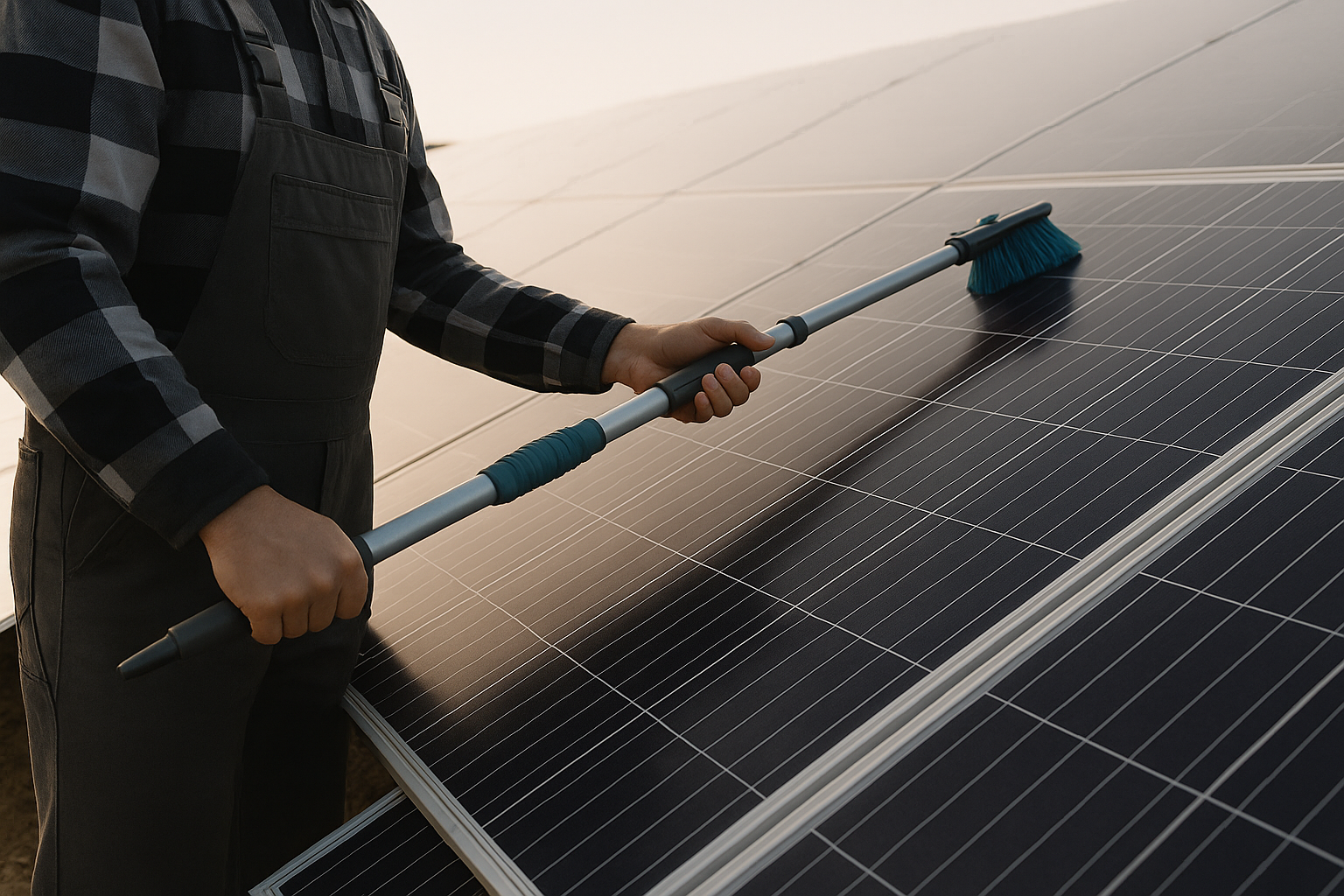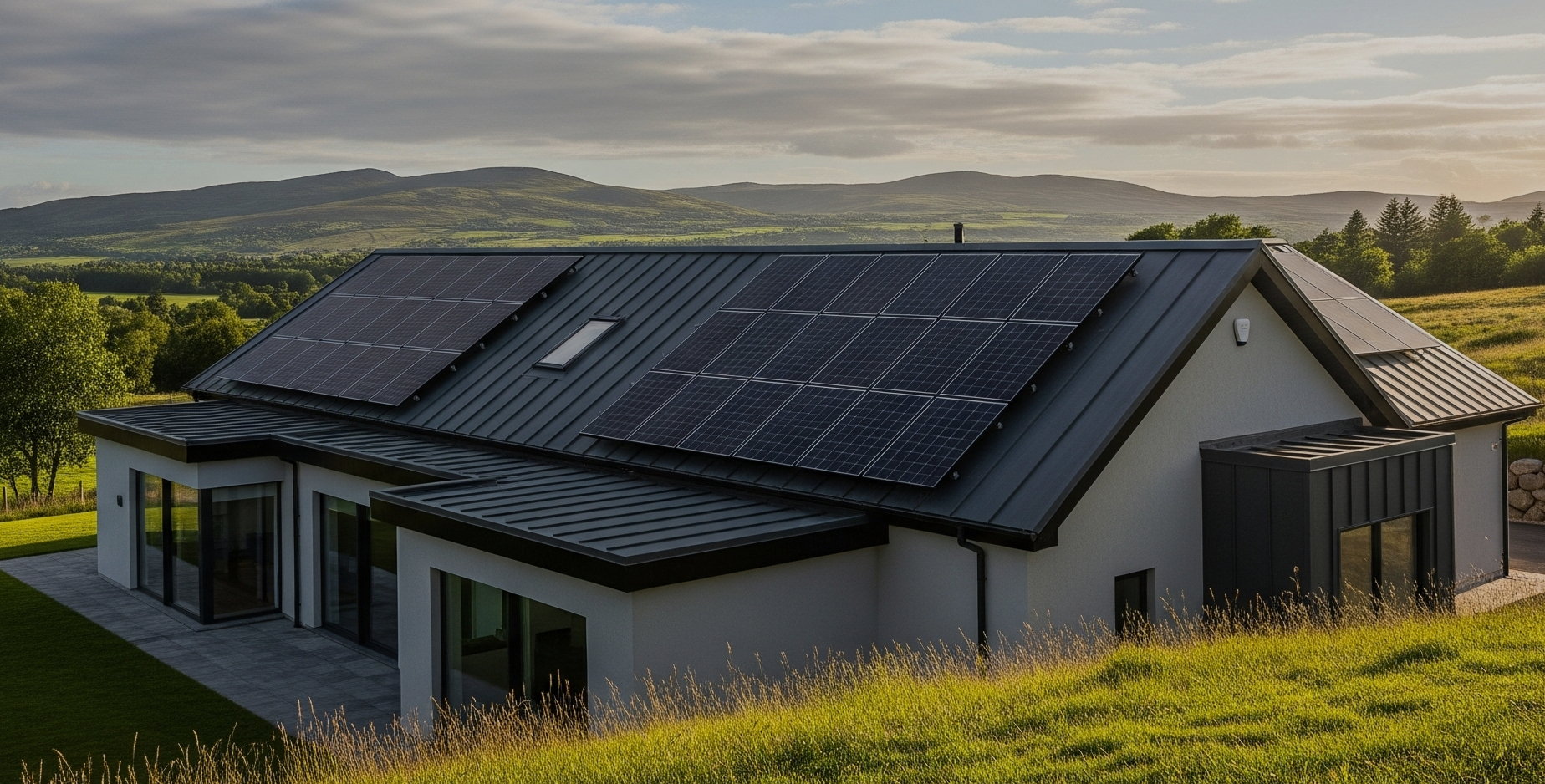Solar Panel Maintenance in Scotland: 7 Simple Steps & Typical Payback
Keep your solar panels in peak condition across Scotland. Learn 7 essential maintenance tips, understand costs, and discover payback potential

Scotland’s four-seasons-in-a-day weather is great for dramatic skies—less so for solar panels. Even though PV modules are sold as “fit-and-forget”, dirt, lichen and salty coastal spray can chew through efficiency if you ignore them. Follow these seven bite-size tips and keep your array in peak shape.
Quick Maintenance Guide
1. Put Safety First
Skip the ladder unless you’re harness-trained. A wet slate roof is no place for a Saturday adventure. Isolate the DC switch, use a soft brush and pure water—pressure washers void most warranties.
2. Scan After Every Storm
A 30-second binocular check after winter gales spots lifted flashing or loose cables before they leak or arc. Log any micro-cracks in your monitoring app and photograph them for warranty claims.
3. Time Your Annual Clean
Pick a cool spring or autumn morning. Cleaning under full sun risks thermal shock. Local contractors charge £80–£250 depending on roof pitch—worth it when UK studies show even light soiling can shave ~1% a year off output, higher near farmland or the coast.
4. Beat the Moss & Lichen
Our moist air breeds lichen that bonds to the panel’s anti-reflective coating. A plastic scraper plus biocide, approved by major manufacturers, restores glass clarity every two to three years if you have overhead trees or live within five miles of the sea.
5. Listen to Your Inverter
It works harder than any other component and usually lasts 10–15 years. Flashing red LEDs, random resets or a sudden drop in daily kWh are early red flags—catch them before they trigger the dreaded “no-generation” alert.
6. Track Performance, Not Just Yield
Log monthly kWh per installed kWp in a spreadsheet. If output falls more than 5% year-on-year (allowing for daylight hours), schedule a diagnostic thermographic scan. For expert assistance with diagnostics or if you're considering an EV charger install, our team can help.
7. Book a Five-Year Service
Think of it as an MOT: IR scan for hotspots, DC insulation test, torque check on MC4 connectors, and firmware update. Grants or interest-free loans from Home Energy Scotland can soften the cost of upgrades like optimisers, a new inverter, or even integrating battery storage. For more impartial advice, the Energy Saving Trust is an excellent resource.
Costs & Payback
A typical 4kW roof system in Scotland nets £420–£520 of bill savings a year at 2025 tariffs. Spending £120 on an annual clean protects that return; let grime build and you lose the same cash in wasted generation. Add a battery and you’ll bank 70% of your solar instead of exporting it, cutting payback to roughly eight years. Home Energy Scotland grants can further improve these figures.
Frequently Asked Questions
Related Articles
Continue reading with these similar topics

The Complete Guide to Home Battery Storage & Funding in Scotland
Unlock energy savings in Scotland! Your guide to home battery storage costs, benefits, ROI, and crucial 2025 funding updates (Home Energy Scotland & ECO4). Cut bills & use more solar.

The Ultimate Guide to Solar Panel Installation in Scotland 2025
Your complete 2025 guide to solar panels in Scotland. Learn about installation costs, grants like Home Energy Scotland, ROI, and the step-by-step process.

What's Possible with Solar Panels for Flats and Tenements in Scotland
Complete guide to installing solar panels on flats and tenements in Scotland. Learn about ownership, consent requirements, SolShare systems, costs, grants, and how to get your neighbours on board.